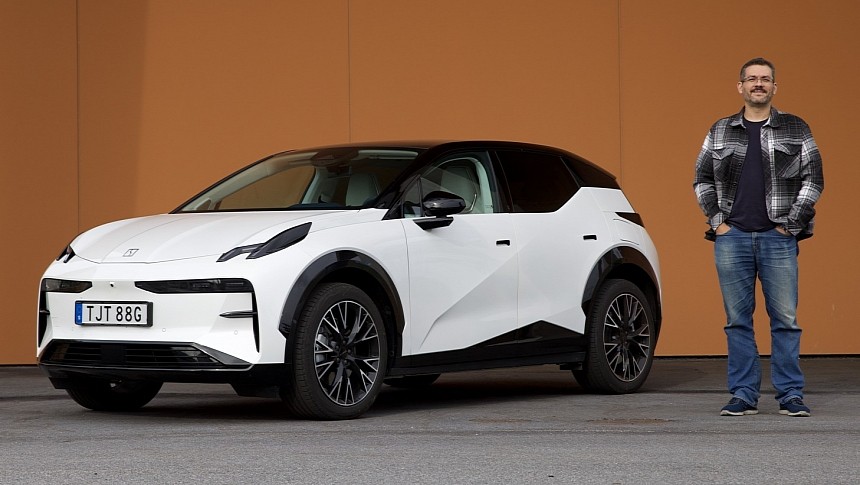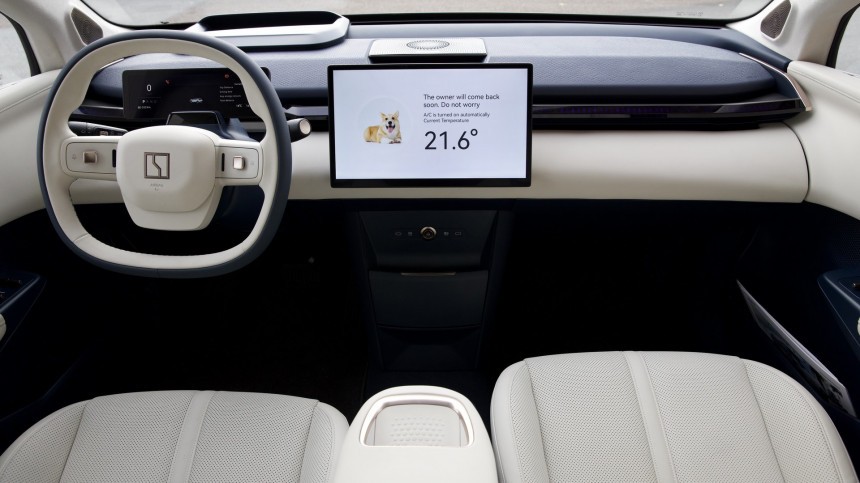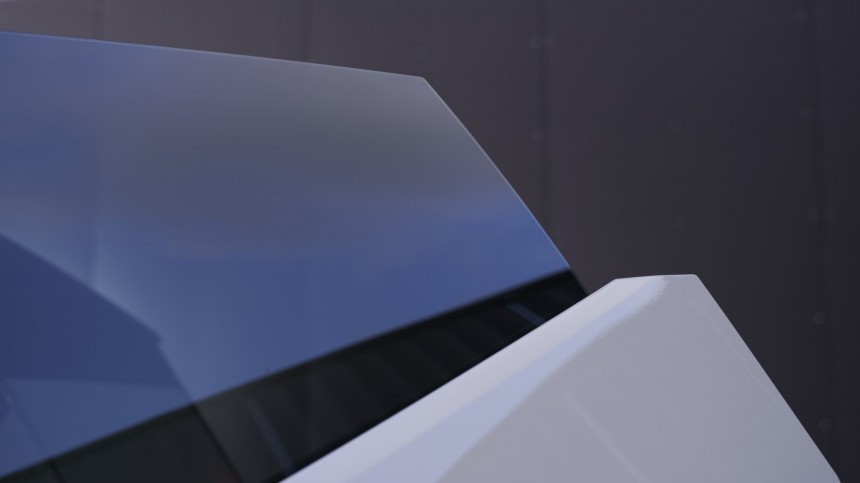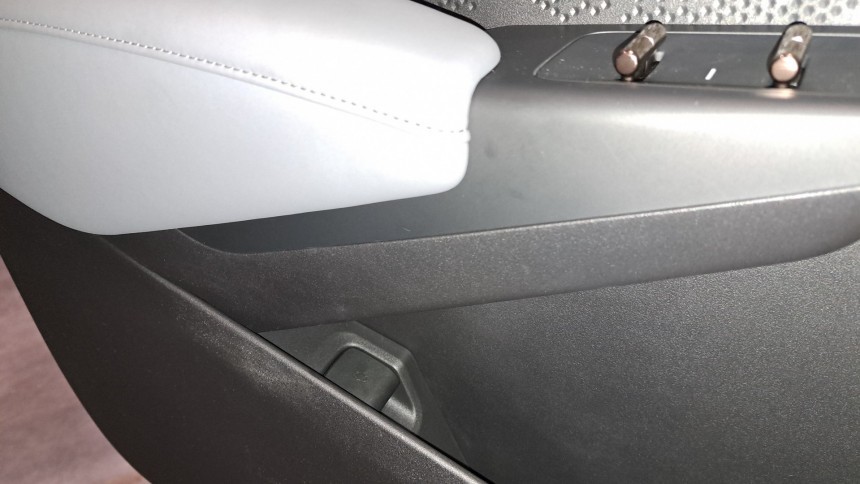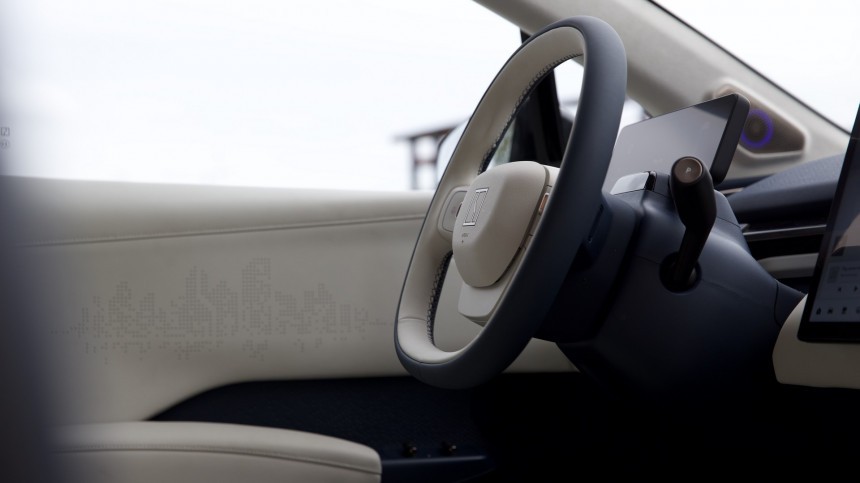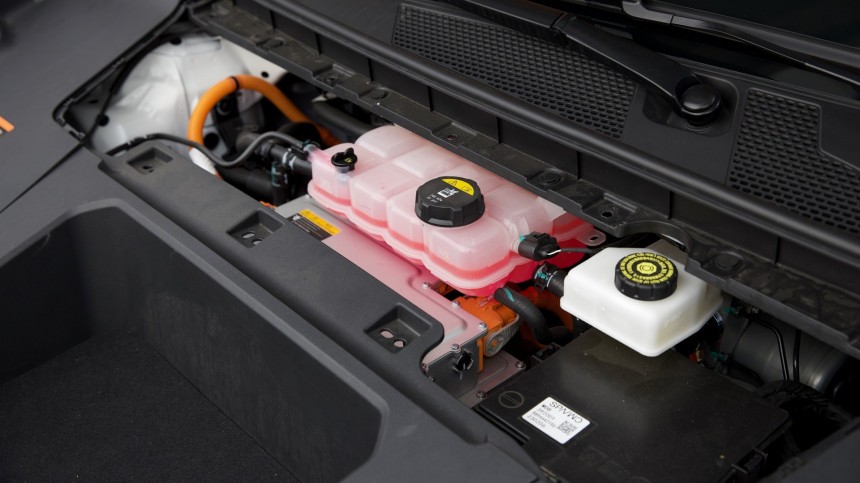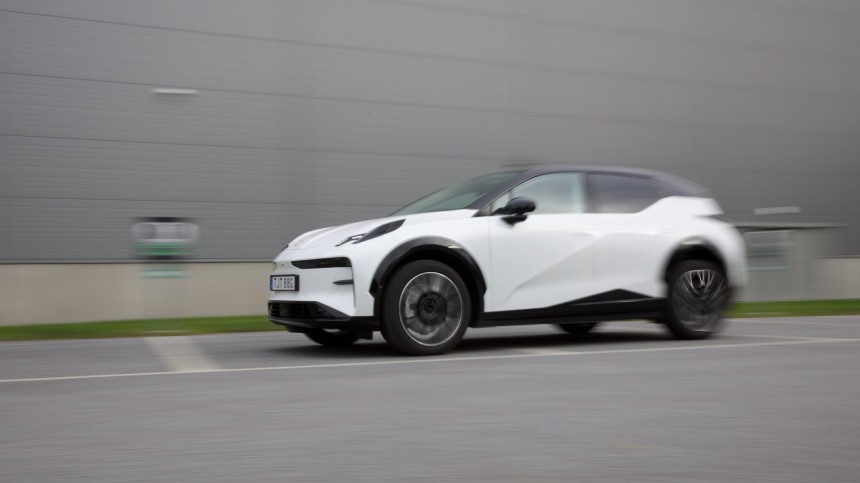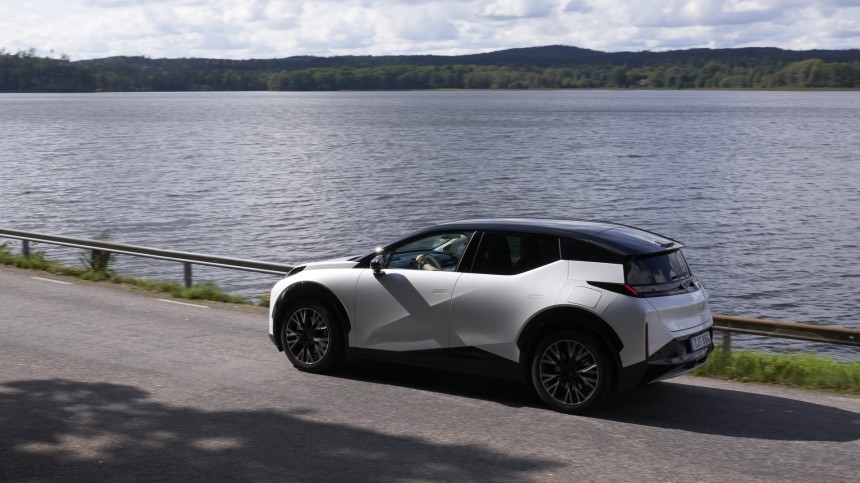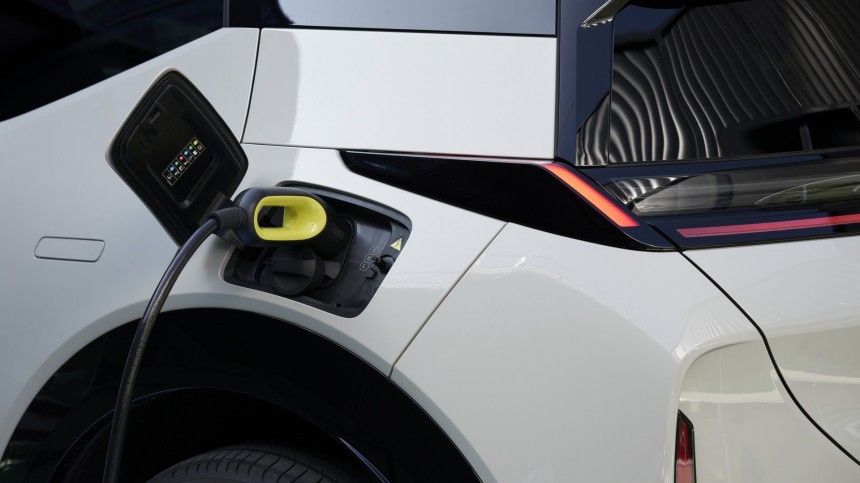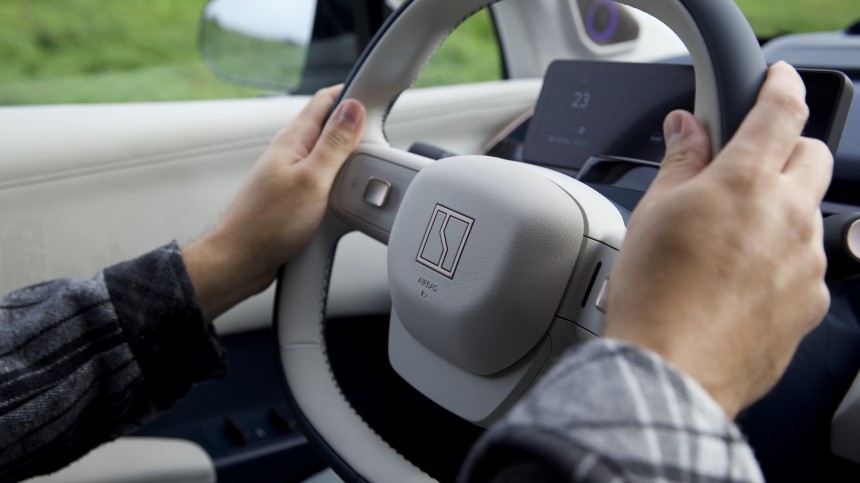By now, you know pretty well how Elon Musk decided to call Twitter after purchasing it. When the Tesla CEO announced his social media would become X, I felt tempted to compare that move to what Eike Batista used to do. The former Brazilian billionaire always put an X in his companies' names as a lucky charm: he thought it would help them multiply good results. The ZEEKR X does not have any connection with any of these two controversial characters apart from adopting several solutions Tesla applied to its cars and trying to perfect them – even the lousy ones.
It was not always like that. ZEEKR's first car – the 001, of course – followed a more traditional approach that makes it feel premium effortlessly. I have also driven it, so I'll save my impressions about the car for another story. Geely's premium brand will try to convince customers that the X can be the same thing with something it calls Modern Luxury Experience. Summing it up, it relies on a simpler interior and more tech to offer a premium feel.
According to ZEEKR's executives, the company has identified two main target audiences for this proposition. The first is what they call Tech Savvy, someone who is more interested in gadgets than in driving. The second aspirational customers are the Young Olds, those who have already raised their kids and may eventually carry their grandchildren around. Their previous cars were premium internal combustion engine (ICE) vehicles, so they still want that feel in their new electric cars, which they chose out of environmental concerns.
If your reference for premium cars is Tesla, the ZEEKR X will look better than the American battery electric vehicle (BEV) maker's products. If you come from more traditional brands, the premium materials and the build quality in this Chinese SUV will not make the cut. What compromises its premium experience is not any of these factors; it is the way the ZEEKR X was conceived.
Before you enter the BEV, you can appreciate the elegant work ZEEKR's designers performed. Some companies just place creases everywhere, making their cars look like crumpled sheets of paper. The ZEEKR X has one that starts at the bottom of the front doors and goes up straight to the high base of the C-pillar in the rear doors. Another one emerges from the middle of the front door to reach the rear wheel well. The sills and wheel arch claddings are painted black piano, which may become problematic as the car ages.
All units of the ZEEKR X have a two-tone paint because the upper part of the body is always black. There are four color options for the lower portion of the vehicle: grey, beige, white, or green. Despite presenting an impressive drag coefficient of 0.28 – similar to that the most advanced sedans in the 2000s had – ZEEKR will have the option of roof rails in the future.
Externally, the only similarity you'll find with a Tesla is the frameless doors. That's almost standard in BEVs because it makes the vehicle lighter. According to Tony Baho, these windows also give the car a more sophisticated appearance. I reminded ZEEKR's chief designer for Color, Materials, Finish (CMF) that this is only desirable in vehicles with strict quality control, something he said the brand will prove it has. Let's be honest: for BEVs, that's easier regardless of construction quality. After all, the battery pack improves body stiffness. Even so, there are several cases of windows spontaneously shattering in Tesla cars, which may have to do with body geometry. Let's hope ZEEKR vehicles will not present that issue.
The rear is perhaps the dullest part of the electric SUV. Its taillights resemble simple LED strips underneath the small back window, with a lighted ZEEKR lettering separating them. Click a tiny button in front of the letters, and the hatch will open. That gives access to a cargo area that can carry only 362 liters (12.8 cubic feet) of luggage. To close it, just click another button at the button of the hatch. The car will take care of that for you.
The main similarity between the X and some Tesla vehicles (the Model 3 and Model Y) is that several critical adjustments in the car are concentrated on the central screen. Rear-view mirrors, seat cooling and heating, and air-conditioning controls are all there. This is a cost-cutting effort that has nothing premium about it. Should the screen fail for any reason, you cannot access these adjustments. At least the ZEEKR X still has two levers on the steering column.
The one on the right puts the car to move. Move it up, and the gear selector goes to reverse (R). Push it down, and it is on drive (D). The middle is for neutral (N), but it is not clear why you have that option in the ZEEKR X – when we get to the driving portion of this review, you'll get the point. Park (P) is on a button at the tip of the lever. Just press it, and the car's handbrakes are also activated. It feels a bit weird leaving the vehicle for the first time, but that's how it is supposed to work. There's no button to turn the car on or off. Teslas are the same.
If you want to activate cruise control, you do that with the same right lever. Sadly, I did not have enough time with the car to figure out how to turn it on seamlessly. I only got it to work once but did not manage to change the set speed. I suspect you can do that on the steering wheel's buttons, but I could not confirm that.
If I spend more time with this car in the future, I will fix that, but that's not what matters here. This was the perfect example of how following Tesla's lead was not a good call for the ZEEKR X. The cruise control did not have an intuitive operation: you have to learn how it works. In most vehicles, the levers contain all the instructions needed to get the cruise control's help. There's a standard that makes you capable of using it regardless of what you are driving. Well, not in a Tesla and not in the ZEEKR X. It is a pity. In Sweden – where the test drive took place – that would have been truly helpful in dealing with all the different speed limits and the radars spread everywhere.
The situation even reminded me of the issues the American company had in China with customers trying to deal with the gear selector and accidentally turning on Traffic-Aware Cruise Control (TACC). Tesla performed a recall in that country to add a noise that indicated when the system was activated. That was the main suspect in the several sudden unintended acceleration (SUA) cases involving Tesla vehicles until Costas Lakafossis came up with a better explanation.
Finally, ZEEKR also hides the brake fluid reservoir and the coolant tank under a plastic cover. Take a peak under the X hood and you'll have the impression they don't even exist, so I removed the plastic cover and asked Petter Berg to take some pictures for me. Nizar Kamel heard that some Model Y units came without the brake fluid cap. The Tesla customer removed the plastic cover that hid it and discovered the front casting was cracked. The BEV maker called it a "discontinuity" – and a day. At least the ZEEKR X does not use massive castings.
Despite these annoyances, Tesla's influence has at least one positive outcome: the ZEEKR X also offers a pet mode. If you are not familiar with it, this feature keeps animals protected against heat when they are left alone inside the vehicle. The B-pillar brings a round screen that informs about this mode, charging level, and other useful data. That's not something the American automaker offers, so count that as something unique to Geely's premium brand.
The Tesla inspiration makes the ZEEKR X interior look clean, but you may prefer to call it spartan. The ambient light, the metal switches, and the Yamaha speakers are the only elements that suggest the SUV is a premium vehicle. The small screen behind the wheel is an improvement compared to what the Model 3 and Model Y offer, but it is the head-up display that hits the jackpot. When you use ZEEKR's navigation system, it makes it almost impossible to miss the next step. As for the little screen, it looks like a tilted smartphone. I would not avoid using it, mind you; I would just prefer something that did not feel so generic.
That would not have been a problem if the vehicle I got to drive did not show a noticeable delay in throttle response. Anyone who drove a car from the 2000s with early CAN BUS will remember how long it took for the horn to make a sound or the headlights to flash: it only happened a while after you pushed the button or pulled the lever. It's the same thing with the ZEEKR X, only with the accelerator pedal. Press it, and the car will only jump forward after a while. Even if you do that smoothly, you will notice the delay.
I talked about it with Víctor Prado, ZEEKR's Product Expert. The engineer told me that we had preproduction vehicles for the test drive and that the first production units were still on their way to Europe. He also said the BEV I drove should have an issue, but I eventually moved another one for a short distance, and it behaved in the same way, even if the delay was not as evident.
Another thing that bothered me was that the ZEEKR X does not coast. As soon as you remove your right foot from the accelerator pedal, it will start to slow down. The only two options for regenerative braking are moderate or intense. When I told Prado about that, he clarified that the ZEEKR X has permanent magnet motors. That means that moving it will always generate electricity. Towing demands a careful procedure unless you are dealing with the Long Range RWD. In this derivative, you will only need dollies for the rear wheels.
A positive note on the ZEEKR X's behavior can be credited to the competent suspension. It was quite comfortable on uneven tarmac and predictable in high-speed curves – sadly, only a few along the route. Should anything go wrong, the car has 19 advanced driver assistance systems (ADAS). It is reassuring to imagine Volvo helped calibrate them.
The long wheelbase makes the electric SUV a surprisingly roomy vehicle, with plenty of space for a 1.85-meter (6'1") person to sit right behind someone as tall as they are. There is good thigh support, and the rear seats looked comfortable in the short time I spent there. The extensive glass roof promises to filter 90% of UV radiation. That's good news, considering the ZEEKR X has nothing to block the sunlight that comes through it.
If you can charge at home, the electric SUV offers a 22-kW onboard charger. It promises to replenish the relatively small 69-kWh battery pack in 4 hours if you start the process with no charge at all – which is never a good deal. Ideally, you should never allow the charge to drop below 10% and should not charge NMC cells to 100% only exceptionally. If the ZEEKR X used LFP cells, that would not be a problem.
The ZEEKR X fast charging limit is 150 kW, meaning the 400V system will take 28.8 minutes to go from 10% to 80% of charge. Although that is a bit less time than other vehicles charging at that voltage can deliver, some cars already work at 800V or more, which allows them to reduce fast-charging times. Ironically, not all automakers take advantage of that.
The Porsche Taycan demands 21 minutes to charge from 10% to 80% because its maximum charging speed is 225 kW. The BYD Seal takes 26 minutes to charge from 30% to 80%, which means it will demand more minutes than the ZEEKR X to go from 10% to 80%. The Chinese sedan works at 800V, and its charging speed is also 150 kW. The LFP cells probably have something to do with the BYD's higher charging times.
Although the ZEEKR X is more affordable, people already know these other brands well. ZEEKR is the new kid on the block, trying to make friends. It may take a while until it gains trust. The good news is that it is a good boy. Translating that to the automotive world, it presents a solid ride, premium solutions, and plenty of space for a family (apart from the trunk) with a unique style. Whether this will allow it to lunch with the cool kids is for the markets to decide.
Pros:
Cons:
According to ZEEKR's executives, the company has identified two main target audiences for this proposition. The first is what they call Tech Savvy, someone who is more interested in gadgets than in driving. The second aspirational customers are the Young Olds, those who have already raised their kids and may eventually carry their grandchildren around. Their previous cars were premium internal combustion engine (ICE) vehicles, so they still want that feel in their new electric cars, which they chose out of environmental concerns.
If your reference for premium cars is Tesla, the ZEEKR X will look better than the American battery electric vehicle (BEV) maker's products. If you come from more traditional brands, the premium materials and the build quality in this Chinese SUV will not make the cut. What compromises its premium experience is not any of these factors; it is the way the ZEEKR X was conceived.
Design Evaluation
ZEEKR did a good work at giving the X a distinctive appearance. Although it will remind you of a Lynk & Co product – as I mentioned in a previous story – the new electric SUV has styling solutions that set it apart. Get close to the car, and the door handles will tilt toward the interior. Just insert your hand in the niche this movement creates and touch the top of the inside surface: the door will pop open. That will have some implications, but I'll talk about them later.Before you enter the BEV, you can appreciate the elegant work ZEEKR's designers performed. Some companies just place creases everywhere, making their cars look like crumpled sheets of paper. The ZEEKR X has one that starts at the bottom of the front doors and goes up straight to the high base of the C-pillar in the rear doors. Another one emerges from the middle of the front door to reach the rear wheel well. The sills and wheel arch claddings are painted black piano, which may become problematic as the car ages.
All units of the ZEEKR X have a two-tone paint because the upper part of the body is always black. There are four color options for the lower portion of the vehicle: grey, beige, white, or green. Despite presenting an impressive drag coefficient of 0.28 – similar to that the most advanced sedans in the 2000s had – ZEEKR will have the option of roof rails in the future.
The rear is perhaps the dullest part of the electric SUV. Its taillights resemble simple LED strips underneath the small back window, with a lighted ZEEKR lettering separating them. Click a tiny button in front of the letters, and the hatch will open. That gives access to a cargo area that can carry only 362 liters (12.8 cubic feet) of luggage. To close it, just click another button at the button of the hatch. The car will take care of that for you.
Interior Assessment
It is inside that the similarities with Tesla become more evident. The doors come with electronic locks. If the car faces a 12V problem, there's no way to open it from the outside. On the inside, it has mechanical releases to allow the occupants to leave. ZEEKR did a better job with them than the American BEV maker. In the X, the release is inside the door pockets in the front and under the internal door handles at the back. People trying to leave the electric SUV will not find that mechanism on their first try, but at least they will not need tools to operate it. ZEEKR should make sure its customers know where the releases are.The one on the right puts the car to move. Move it up, and the gear selector goes to reverse (R). Push it down, and it is on drive (D). The middle is for neutral (N), but it is not clear why you have that option in the ZEEKR X – when we get to the driving portion of this review, you'll get the point. Park (P) is on a button at the tip of the lever. Just press it, and the car's handbrakes are also activated. It feels a bit weird leaving the vehicle for the first time, but that's how it is supposed to work. There's no button to turn the car on or off. Teslas are the same.
If you want to activate cruise control, you do that with the same right lever. Sadly, I did not have enough time with the car to figure out how to turn it on seamlessly. I only got it to work once but did not manage to change the set speed. I suspect you can do that on the steering wheel's buttons, but I could not confirm that.
The situation even reminded me of the issues the American company had in China with customers trying to deal with the gear selector and accidentally turning on Traffic-Aware Cruise Control (TACC). Tesla performed a recall in that country to add a noise that indicated when the system was activated. That was the main suspect in the several sudden unintended acceleration (SUA) cases involving Tesla vehicles until Costas Lakafossis came up with a better explanation.
Finally, ZEEKR also hides the brake fluid reservoir and the coolant tank under a plastic cover. Take a peak under the X hood and you'll have the impression they don't even exist, so I removed the plastic cover and asked Petter Berg to take some pictures for me. Nizar Kamel heard that some Model Y units came without the brake fluid cap. The Tesla customer removed the plastic cover that hid it and discovered the front casting was cracked. The BEV maker called it a "discontinuity" – and a day. At least the ZEEKR X does not use massive castings.
The Tesla inspiration makes the ZEEKR X interior look clean, but you may prefer to call it spartan. The ambient light, the metal switches, and the Yamaha speakers are the only elements that suggest the SUV is a premium vehicle. The small screen behind the wheel is an improvement compared to what the Model 3 and Model Y offer, but it is the head-up display that hits the jackpot. When you use ZEEKR's navigation system, it makes it almost impossible to miss the next step. As for the little screen, it looks like a tilted smartphone. I would not avoid using it, mind you; I would just prefer something that did not feel so generic.
Driving Take
ZEEKR gave us several route options in Stockholm to get acquainted with its electric SUV, a plain city that is mostly at sea level. That made it easy for the ZEEKR X not to spend much energy on hills. Most routes were around narrow local roads with 30-kph (18.6 mph) or 50-kph (31 mph) limits. For a car that promises to go from 0 to 100 kph (62 mph) in 3.8 seconds, it would be impossible to check how well it performs without breaking the law. The top speed is electronically limited to 180 kph (112 mph).I talked about it with Víctor Prado, ZEEKR's Product Expert. The engineer told me that we had preproduction vehicles for the test drive and that the first production units were still on their way to Europe. He also said the BEV I drove should have an issue, but I eventually moved another one for a short distance, and it behaved in the same way, even if the delay was not as evident.
Another thing that bothered me was that the ZEEKR X does not coast. As soon as you remove your right foot from the accelerator pedal, it will start to slow down. The only two options for regenerative braking are moderate or intense. When I told Prado about that, he clarified that the ZEEKR X has permanent magnet motors. That means that moving it will always generate electricity. Towing demands a careful procedure unless you are dealing with the Long Range RWD. In this derivative, you will only need dollies for the rear wheels.
Everyday Living
Spending a few hours with a vehicle can give you only a glimpse of how it feels to have it every day. Anyway, the ZEEKR X offers plenty of little treats to make traffic time more bearable. Heated and ventilated front seats are a good example. At the back, the seats provide only heating, but that's more than most vehicles can say they have. The premium sound system must also be nice, but I did not listen to music while driving it. I wanted to check how silent it was and was honestly impressed, especially after learning it was a preproduction car.The long wheelbase makes the electric SUV a surprisingly roomy vehicle, with plenty of space for a 1.85-meter (6'1") person to sit right behind someone as tall as they are. There is good thigh support, and the rear seats looked comfortable in the short time I spent there. The extensive glass roof promises to filter 90% of UV radiation. That's good news, considering the ZEEKR X has nothing to block the sunlight that comes through it.
The ZEEKR X fast charging limit is 150 kW, meaning the 400V system will take 28.8 minutes to go from 10% to 80% of charge. Although that is a bit less time than other vehicles charging at that voltage can deliver, some cars already work at 800V or more, which allows them to reduce fast-charging times. Ironically, not all automakers take advantage of that.
The Porsche Taycan demands 21 minutes to charge from 10% to 80% because its maximum charging speed is 225 kW. The BYD Seal takes 26 minutes to charge from 30% to 80%, which means it will demand more minutes than the ZEEKR X to go from 10% to 80%. The Chinese sedan works at 800V, and its charging speed is also 150 kW. The LFP cells probably have something to do with the BYD's higher charging times.
Test Drive Roundup
A crucial element to determine if ZEEKR X's proposition is enticing is checking its price tag. The Long Range RWD starts at €44,990 ($47,192 at the current exchange rate), and the cheapest Privilege AWD costs €49,490 ($51,912). The most direct competitors of the new SUV are the Volvo C40, XC40 Recharge, and the Mercedes-Benz EQA. The Swedish cars start at €47,500 in Germany, while the EQA's price kicks off from €50,777 in the same country.Although the ZEEKR X is more affordable, people already know these other brands well. ZEEKR is the new kid on the block, trying to make friends. It may take a while until it gains trust. The good news is that it is a good boy. Translating that to the automotive world, it presents a solid ride, premium solutions, and plenty of space for a family (apart from the trunk) with a unique style. Whether this will allow it to lunch with the cool kids is for the markets to decide.
Pros:
- Competitive pricing
- Distinctive style
- Build quality
- Roominess
Cons:
- Throttle response
- Distracting tech
- Lack of buttons
